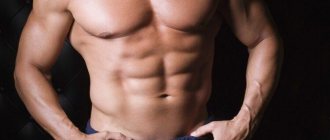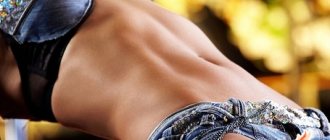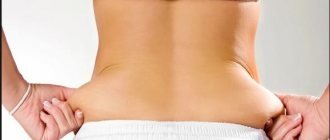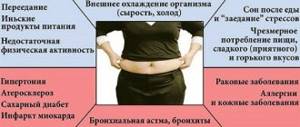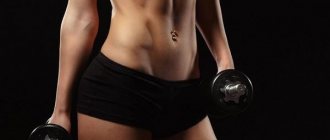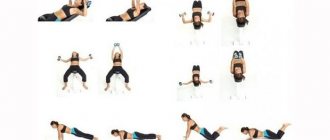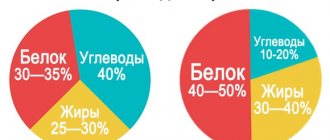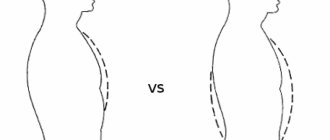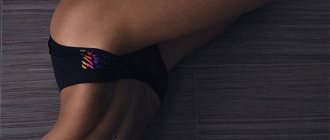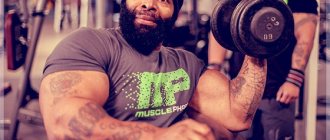General rules
The term “drying” is quite common in the vocabulary of professional bodybuilding/fitness athletes.
The essence of this process is to burn the subcutaneous fat layer while maintaining muscle mass, which allows you to achieve a pronounced muscle relief. That is, the purpose of drying is to “drawing” the muscle relief, so a special nutrition and training system has been developed for a bodybuilder to burn fat. As a rule, this stage of preparation is carried out after gaining muscle mass, the process of which is accompanied by a gain of subcutaneous fat. The main principle of nutrition for a bodybuilder when losing fat is to reduce the glycogen in muscle tissue and switch metabolism to burning fat, which is achieved by switching to a special diet and a certain lifestyle (breaks between meals, rest, sleep duration). At the same time, the diet for drying varies depending on gender and is selected individually.
It should be noted right away that “cutting” nutrition is not an analogue of weight loss diets, since many people who want to dry out the body mean by this process weight loss. This is a completely different program for working on your body, although it is accompanied by weight loss. The main difference is that weight loss diets are aimed at reducing body volume by reducing muscle mass and fatty tissue, and when cutting, at reducing the subcutaneous fat layer, while it is necessary to preserve lean muscle mass.
It is due to this that its drawing is achieved. Accordingly, it is necessary to move on to drying the body only after solving the problem of excess weight. Also, an important condition for cutting is the presence of already built-up muscle mass, since the main task of drying is to outline the already pumped up muscles, removing subcutaneous fat. Otherwise (if you have insufficient muscle mass), drying out your body can lead to exhaustion/exhaustion, and instead of a beautiful, sculpted body, you will get flabby muscles and saggy skin.
One of the indicators of the need to dry the body is the fat content in the body. There are various methods for determining fat content, they are not complicated, and they are described on various web resources. It is difficult to talk about exact generalized figures for the norm of fat content in the body, since this indicator is quite individual, but there is a certain range, which is accepted as the norm:
- Men: age 30 years – 13-18%, 30-50 years – 14-20%, 50 years and older – 16-22%.
- Women: age up to 30 years – 15-20%, 30-50 years – 19-25%, 50 years and older 20-27%.
It is important to know to what level you need to reduce fat content. A guide for men can be:
- 3-7% – super-athletic figure (for bodybuilders);
- 10-12% – normal athletic figure;
- 15-18% – athletic fit.
For women:
- 13-15% – slender “model” figure;
- 16-22% – “standard” slim figure.
On average, if you are not a professional athlete, body fat should not be lower than 13-15% for women and 5-9% for men, otherwise various functions may be impaired. This is especially important for women whose fat deficiency can lead to menstrual irregularities and changes in hormonal levels.
The diet for drying the body is based on:
- daily calorie deficit (the ratio of energy intake and energy expenditure, including basal metabolic rate + physical activity);
- maintaining a high metabolic rate.
There are various nutritional systems for drying the body. For people who are not professional athletes, the best option is the method of stepwise (gradual) reduction in calorie intake. The recommended calorie deficit is 10-20% of the daily intake, which should be achieved by excluding easily digestible carbohydrates (foods with a high glycemic index ) and, to a lesser extent, fats from the diet. With a constant deficiency of carbohydrates in the diet, the body begins to gradually switch to burning subcutaneous fat.
The rate of reduction in caloric intake also depends on the specified rate of fat burning. Normally, body weight loss should not exceed 1 kg/week. Otherwise, there is a risk of turning on the body’s self-defense mechanism, in which fat will begin to be deposited. Therefore, the drying process must occur under constant monitoring of fat levels and body weight. It is important not to strive for a sharp restriction of caloric intake, but to carry out the reduction process smoothly, since it is proper nutrition during drying - a gradual reduction in caloric intake that contributes to greater loss of fat and, in a much smaller proportion, muscle mass.
The overall ratio of dietary nutrients in the diet should be approximately 50-60% protein, 10-20% fat and 30-40% carbohydrates. As for the quantitative content of carbohydrates in the diet, this indicator is determined individually depending on the athlete’s body weight and physical level. activity. Their amount can vary between 120-200 g/day, but they should be reduced gradually to a level of 1.5 g/1 kg of body weight.
Fats should be present in the diet to a minimum, but not less than 40 g/day. The approximate fat content in the diet can be determined by multiplying 0.5 g by body weight. Preference is given to high-quality vegetable fats; solid animal fats are excluded. Controlling carbohydrate intake is especially important when cutting, because if during any period of drying your body weight stops decreasing, you should reduce the amount of carbohydrates in your diet.
When drying and working on relief, the diet should be dominated by natural products and low-fat foods. The carbohydrate component is represented by complex carbohydrates (pasta made from rye flour, buckwheat, brown rice, non-starchy vegetables, sour fruits), which will provide the body with energy.
It is recommended to consume complex carbohydrates in the first half of the day. One of the common mistakes of non-professional athletes is the formation of a diet with the complete exclusion of fats and carbohydrates, which in principle is unacceptable and even dangerous to health due to the high risk of developing ketoacidosis , as well as an increase in the load on the kidneys due to the consumption of proteins in large quantities.
The protein component is represented by complete animal proteins - lean meat (beef, chicken fillet, turkey, rabbit meat), fish, seafood, eggs, dairy/fermented milk products with a low fat content (yogurt, milk, cottage cheese, kefir). The protein content in the diet can range from 1.5 to 3.0 g/kg body weight.
Maintaining a high metabolic rate is achieved through frequent split meals (5-7 times a day). And the higher the metabolism, the faster the loss of subcutaneous fat occurs. Hot peppers, green tea and water also help increase metabolism.
To enhance metabolism and remove waste and toxins from the body, it is important to drink enough water (3-4 liters/day), including during/after training. During drying, harmful foods are removed from the diet - ketchups, mayonnaise, smoked meats, fatty meat and fish, fast food products (crackers, chips), canned food, carbonated drinks, pickles, marinades, sugar, preserves, jams, candies, ice cream, honey, sweet fruits (bananas, grapes, persimmons, pears, peaches, apricots), pastries, cakes, dough products, dried fruits, starchy vegetables (potatoes, eggplants, corn) and all alcohol-containing drinks, as they inhibit the fat burning process.
Among the methods of culinary processing of products, boiling, steaming, baking and stewing are recommended, which allow preserving the beneficial properties of the products. Frying is completely excluded, since the use of fat increases the calorie content of the diet. It is preferable to eat greens and vegetables fresh.
For more advanced athletes, the carbohydrate alternation method can be recommended. The essence of the method is a combination of days with a diet containing a low carbohydrate component and days with a high carbohydrate content, which alternate according to various schemes. An example of a classic alternation: 2 + 1, in which the first 2 days are a diet with a low carbohydrate content, and the 1st day is a diet with a high carbohydrate content.
Or 3+1; 4+2 and so on. The basis of this dietary pattern is to reduce the risk of the body adapting to a decrease in carbohydrates and the energy value of the diet and preventing the activation of a defense mechanism that blocks the fat burning process. At the same time, muscle proteins may be involved in the metabolic .
On low-carbohydrate days of the cycle, carbohydrate intake is about 1.0 g/kg of weight, and protein - 2.5-3.0 g/kg of weight, while on high-carbohydrate days, the carbohydrate content in the diet increases to 4-6 g/kg weight, but the amount of protein is reduced to 1-1.5 g/kg. Often, at the end of the mini cycle, a day with moderate consumption of carbohydrates (2-3 g) and proteins is practiced - 2-2.5 g / kg of weight. At the same time, despite the fact that the weight loss schedule on a carbohydrate alternation diet is uneven, this drying method is an effective and fairly safe option.
Despite the general principles of the body drying process and the commonality of techniques, there are a number of drying features for men and women. A diet for drying the body for girls is based on the characteristics of the female body: first of all, in women, a lower basal metabolism, the transfer of excess carbohydrates into fat deposits occurs much faster, stored fat is spent more intensively for energy needs, disproportionate distribution of muscles and fat throughout the body, When drying, fat is removed first from the face, arms and chest, and from the legs and buttocks - last.
Accordingly, cutting meals for girls should contain less protein, since muscle mass in women is significantly lower than in men. With certain drying schemes, there is no need to allow strict restrictions/complete exclusion of any food nutrients from the diet. For women, a balanced diet is more important, since there is a risk of imbalance of hormonal levels and the menstrual cycle.
Many girls forget that a diet for relief is indicated only for women who have sufficiently developed muscles and are absolutely healthy. At high risk are girls with a body weight of less than 52 kg, especially those who lose weight intensively, girls under 25 years old with a fat reserve of less than 13%.
Therefore, the diet menu for drying the body for girls must include omega-3 , olive/linseed oil for salad dressing, nuts and fish daily (fish oil). An equally important problem for women during the drying period is cellulite, which often occurs during sudden weight loss. To prevent this phenomenon, it is recommended to use manual/hardware massage and wraps. For women during the drying period, a carbohydrate alternation diet is more preferable, which allows you to neutralize the negative expectation of feeling hungry.
A cutting diet for men should be aimed primarily at preserving muscle mass and include: proteins approximately 2/3 of the diet, carbohydrates - 1/3, fats - no more than 10%. If you have a congenital high metabolism, you can consume small amounts of sweets in the first half of the day. As a rule, a sports diet for drying the body of men involves enriching the diet with specialized nutritional supplements: protein , amino acids , fat burners, vitamins , glutamine .
Cutting nutrition for men involves split meals - at least 5-6 times a day, in portions of no more than 250 g. At the same time, the nutrition menu should be structured so that breakfast and second breakfast are the most high-calorie. The last meal should be carbohydrate-free, and the penultimate meal should contain a minimum of carbohydrates. Body drying for men usually takes longer, is divided into several stages and takes up to 1.5 months.
As a rule, body drying for professional athletes is carried out under the strict supervision of an experienced trainer, in several stages, using sports nutrition (anabolics, fat burners), which allows them to reduce the content of subcutaneous fat to a minimum, maximally “exposing” the muscle corset at the time of competition (1 -2 times per year). It is impossible to achieve similar results on your own at home without the guidance of a highly qualified trainer.
Accordingly, the diet for drying the body at home may be less strict. It is important to learn how to determine the calorie content of your daily diet using tables of calorie content of foods and the level of your energy expenditure, which will allow you to slowly reduce the calorie content of your diet and control the amount of carbohydrates consumed. The training plan does not fundamentally change, but its intensity decreases. When drying at home, you need to properly balance your diet so that the body receives the required minimum of carbohydrates and fats, avoiding starvation.
Drying the body at home is often accompanied by some dietary mistakes, the main of which are:
- undereating/overeating;
- complete refusal of salt;
- uneven distribution of food throughout the day (refusal of breakfast, consumption of carbohydrates in the afternoon);
- complete exclusion of carbohydrates/fats from the diet;
- a sharp restriction of caloric intake, which violates the basic principle of consistent reduction in caloric intake;
- insufficient fluid intake.
Also, we should not forget that even at home it is necessary to periodically adjust your diet: if weight is lost too quickly, increase the calorie intake; if weight loss progress is weak, reduce the calorie intake. Everyone decides whether or not to use special sports nutrition supplements when training at home (protein shakes, amino acids, fat burners), but to balance micronutrients in the diet, it is recommended to use vitamin and mineral supplements ( Vitrum , Vitamax , Multitabs , Complevit , Unicap ) and preparations with Omega-3 .
An extremely important point at the stage of drying the body is the correct entry and exit from the diet. It is correct to practice preliminary preparation of the body for drying, including a gradual restriction of high-calorie foods and sweets 1-2 weeks before it begins. Exiting the body drying regime should also be slow, with a gradual return to your usual foods in your diet. It is a gradual return to the usual diet that allows you to maintain the effect of drying the body for a long time.
Drying bananas
In order for subcutaneous fat to begin to melt, the bodybuilder will have to create a calorie deficit. Therefore, you need to consume fewer calories than you expend. Therefore, by eating bananas, if the total daily caloric intake is much less than the energy consumed during the day.
However, bodybuilders do not abuse bananas, but limit their quantity during the cutting phase. Typically, athletes prefer to eat this fruit in the morning and after intense training. This allows you to prevent catabolic processes and replenish the energy expended during training. This approach is completely justified. On a diet, you cannot eat more than two bananas per day.
Eating any fruit in the evening is highly discouraged. This leads to the accumulation of fatty deposits. This fits within the basic rule that in the morning you need to eat a lot of carbohydrates and little protein, and in the evenings, on the contrary, you need to eat few carbohydrates and more protein. And in order to increase the relief, this principle must be observed.
Authorized Products
The diet for drying the body includes:
- Protein products - lean red meats (beef/veal), rabbit and poultry (chicken, turkey), seafood, low-fat cottage cheese, soy products, fish (cod, hake, pike, perch, flounder, trout, salmon), chicken eggs soft-boiled, low-fat cheese, kefir.
- Fats - fish oil, virgin vegetable oils, walnuts, flax seed.
- Carbohydrates - porridge from whole grain cereals (buckwheat, barley/oatmeal, brown rice), vegetables (olives, carrots, cabbage, tomatoes, garden herbs, zucchini, eggplant, cucumbers, green salad leaves, onions, green beans), unsweetened fruits ( in the morning), grain breads.
- Free liquid - green tea, rosehip decoction, mineral water, herbal teas.
Table of permitted products
| Proteins, g | Fats, g | Carbohydrates, g | Calories, kcal | |
Vegetables and greens | ||||
| eggplant | 1,2 | 0,1 | 4,5 | 24 |
| peas | 6,0 | 0,0 | 9,0 | 60 |
| green peas | 5,0 | 0,2 | 13,8 | 73 |
| zucchini | 0,6 | 0,3 | 4,6 | 24 |
| cabbage | 1,8 | 0,1 | 4,7 | 27 |
| broccoli | 3,0 | 0,4 | 5,2 | 28 |
| carrot | 1,3 | 0,1 | 6,9 | 32 |
| cucumbers | 0,8 | 0,1 | 2,8 | 15 |
| olives | 0,8 | 10,7 | 6,3 | 115 |
| iceberg lettuce | 0,9 | 0,1 | 1,8 | 14 |
| tomatoes | 0,6 | 0,2 | 4,2 | 20 |
| beans | 7,8 | 0,5 | 21,5 | 123 |
| green beans | 2,8 | 0,4 | 8,4 | 47 |
| lentils | 24,0 | 1,5 | 42,7 | 284 |
Nuts and dried fruits | ||||
| nuts | 15,0 | 40,0 | 20,0 | 500 |
| flax seeds | 18,3 | 42,2 | 28,9 | 534 |
Cereals and porridges | ||||
| buckwheat | 4,5 | 2,3 | 25,0 | 132 |
| oatmeal | 3,2 | 4,1 | 14,2 | 102 |
| millet porridge | 4,7 | 1,1 | 26,1 | 135 |
| brown rice | 7,4 | 1,8 | 72,9 | 337 |
Flour and pasta | ||||
| pasta | 10,4 | 1,1 | 69,7 | 337 |
Bakery products | ||||
| whole grain bread | 10,1 | 2,3 | 57,1 | 295 |
Dairy | ||||
| Ryazhenka | 2,8 | 4,0 | 4,2 | 67 |
| natural yogurt 2% | 4,3 | 2,0 | 6,2 | 60 |
Cheeses and cottage cheese | ||||
| cottage cheese | 17,2 | 5,0 | 1,8 | 121 |
| cottage cheese 0.6% (low fat) | 18,0 | 0,6 | 1,8 | 88 |
| curd tofu | 8,1 | 4,2 | 0,6 | 73 |
Meat products | ||||
| boiled beef | 25,8 | 16,8 | 0,0 | 254 |
| veal | 19,7 | 1,2 | 0,0 | 90 |
| rabbit | 21,0 | 8,0 | 0,0 | 156 |
Sausages | ||||
| sausages | 10,1 | 31,6 | 1,9 | 332 |
| sausages | 12,3 | 25,3 | 0,0 | 277 |
Bird | ||||
| boiled chicken breast | 29,8 | 1,8 | 0,5 | 137 |
| turkey | 19,2 | 0,7 | 0,0 | 84 |
Eggs | ||||
| soft-boiled chicken eggs | 12,8 | 11,6 | 0,8 | 159 |
Fish and seafood | ||||
| pink salmon | 20,5 | 6,5 | 0,0 | 142 |
| seafood | 15,5 | 1,0 | 0,1 | 85 |
| herring | 16,3 | 10,7 | — | 161 |
Oils and fats | ||||
| linseed oil | 0,0 | 99,8 | 0,0 | 898 |
| olive oil | 0,0 | 99,8 | 0,0 | 898 |
| sunflower oil | 0,0 | 99,9 | 0,0 | 899 |
Non-alcoholic drinks | ||||
| mineral water | 0,0 | 0,0 | 0,0 | — |
| green tea | 0,0 | 0,0 | 0,0 | — |
| * data is per 100 g of product | ||||
Weekly menu options for men
The menu for the first week of drying is very diverse - you are not limited to one product and can come up with new dishes for every day. It is especially convenient for those who have a multicooker - you can cook a lot of dishes in it that are suitable for your purposes. The drying menu for women and men differs - due to the peculiarities of physiology and psychology.
Men's metabolism works much better than women's, so it is easier for them to achieve the desired result. A weekly drying program for a man is designed taking into account the preservation of muscle mass - otherwise a sculpted body will not work.
Pay attention to BZHU - the balance of proteins, fats and carbohydrates. The amount of protein consumed per 1 kg of body should be at least 2.5 g. Example: the diet of a man weighing 95 kg should include 237.5 g. Carbohydrates in the daily menu should be no more than 2 g, and fats to maintain the functioning of internal organs – 0.5 g per kilogram. Consuming protein shakes increases cutting productivity. Drinking regimen plays an important role, especially on training days. Drink at least 3 liters of water these days.
If a man regularly exercises and has repeatedly dried his body, a couple of weeks will be enough for him to get in shape and make his muscles sculpted. For those who have recently started working out, a week of cutting will bring the loss of only part of the fat mass.
Cutting menu for men for a week (calculated for 5 meals a day):
Monday:
- oatmeal*, cottage cheese, fruit (orange, banana);
- chicken fillet, tomatoes, rice;
- dietary chicken broth, veal, protein shake, orange;
- fresh vegetable salad seasoned with olive, nut or flaxseed oil;
- fillet** of lean fish and steamed vegetables.
Tuesday:
- low-fat cheese, buckwheat porridge, coffee with low-fat milk;
- apple;
- pasta (pasta made from durum flour + tomato paste), veal, tea with honey;
- cottage cheese;
- lean fish fillet and a salad of fresh vegetables without oil.
Wednesday:
- omelette without butter, millet porridge, coffee with low-fat milk;
- cottage cheese with honey;
- dietary chicken broth, fresh vegetable salad without oil, veal;
- protein cocktail;
- chicken fillet, steamed vegetables.
Thursday:
- hard-boiled eggs, low-fat cheese, tea;
- cabbage salad, chicken fillet, rice;
- fish soup, baked vegetables;
- cottage cheese, protein shake, grapefruit;
- lean fish fillet, apple.
Friday:
- omelette without oil, fruit (orange/apple), tea;
- poultry fillet, potatoes, tomatoes;
- bean soup, steamed vegetables, veal;
- protein shake, asparagus;
- chicken fillet, cabbage salad, walnuts.
Saturday:
- millet porridge with low-fat milk, fruit (orange/apple), raisins;
- chicken fillet, buckwheat, tomatoes;
- dietary chicken broth, vegetables with boiled veal, lemon;
- cottage cheese, lean fish, raisins/walnuts;
- chicken fillet, cottage cheese, raisins/walnuts.
Sunday:
- omelette without butter, whole grain bread, honey, tea;
- chicken fillet, oatmeal, tomatoes, orange;
- mushroom soup, buckwheat porridge, carrots, chicken fillet;
- lean fish fillet, fresh vegetable salad;
- protein shake, banana.
*A doctor or trainer will help you determine the exact amount of food and drinks.
**Fillet can be boiled, steamed or baked. You can make steam cutlets. If desired, chicken fillet can be replaced with turkey fillet. To prepare poultry dishes, use the breast.
Fully or partially limited products
A diet for drying the body excludes:
- Products containing easily digestible carbohydrates (sweets, dried fruits, sugar, honey, condensed milk, chocolate, jam, cookies, halva), sweet desserts, cakes, gingerbreads, ice cream.
- Potatoes in any form, wheat bread, pastries, cereals made from crushed grains.
- Fast food products, fatty meats, meat products (sausages, smoked meats, lard, bacon), fatty dairy/fermented milk products.
- Sweet fruits and juices from them (watermelon, melon, grapes, persimmon, banana, pineapple).
- Drinks containing caffeine and carbon dioxide, alcoholic beverages.
Table of prohibited products
| Proteins, g | Fats, g | Carbohydrates, g | Calories, kcal | |
Vegetables and greens | ||||
| fried potato | 2,8 | 9,5 | 23,4 | 192 |
| radish | 1,2 | 0,1 | 3,4 | 19 |
| turnip | 1,5 | 0,1 | 6,2 | 30 |
| beet | 1,5 | 0,1 | 8,8 | 40 |
Fruits | ||||
| figs | 0,7 | 0,2 | 13,7 | 49 |
Berries | ||||
| grape | 0,6 | 0,2 | 16,8 | 65 |
Mushrooms | ||||
| mushrooms | 3,5 | 2,0 | 2,5 | 30 |
Nuts and dried fruits | ||||
| raisin | 2,9 | 0,6 | 66,0 | 264 |
| dates | 2,5 | 0,5 | 69,2 | 274 |
Cereals and porridges | ||||
| corn grits | 8,3 | 1,2 | 75,0 | 337 |
| white rice | 6,7 | 0,7 | 78,9 | 344 |
Flour and pasta | ||||
| pancakes | 6,1 | 12,3 | 26,0 | 233 |
| vareniki | 7,6 | 2,3 | 18,7 | 155 |
| dumplings | 11,9 | 12,4 | 29,0 | 275 |
Bakery products | ||||
| buns | 7,2 | 6,2 | 51,0 | 317 |
| wheat bread | 8,1 | 1,0 | 48,8 | 242 |
Confectionery | ||||
| jam | 0,3 | 0,2 | 63,0 | 263 |
| jam | 0,3 | 0,1 | 56,0 | 238 |
| candies | 4,3 | 19,8 | 67,5 | 453 |
| cake | 3,8 | 22,6 | 47,0 | 397 |
| jam | 0,4 | 0,2 | 58,6 | 233 |
| halva | 11,6 | 29,7 | 54,0 | 523 |
Cakes | ||||
| cake | 4,4 | 23,4 | 45,2 | 407 |
Chocolate | ||||
| chocolate | 5,4 | 35,3 | 56,5 | 544 |
Raw materials and seasonings | ||||
| ketchup | 1,8 | 1,0 | 22,2 | 93 |
| mayonnaise | 2,4 | 67,0 | 3,9 | 627 |
| honey | 0,8 | 0,0 | 81,5 | 329 |
| sugar | 0,0 | 0,0 | 99,7 | 398 |
Dairy | ||||
| milk 3.2% | 2,9 | 3,2 | 4,7 | 59 |
| condensed milk | 7,2 | 8,5 | 56,0 | 320 |
| cream | 2,8 | 20,0 | 3,7 | 205 |
| cream 20% (medium fat content) | 2,8 | 20,0 | 3,7 | 205 |
| sour cream 25% (classic) | 2,6 | 25,0 | 2,5 | 248 |
| Ryazhenka 6% | 5,0 | 6,0 | 4,1 | 84 |
| fruit yogurt 3.2% | 5,0 | 3,2 | 8,5 | 85 |
Meat products | ||||
| fatty pork | 11,4 | 49,3 | 0,0 | 489 |
| salo | 2,4 | 89,0 | 0,0 | 797 |
| bacon | 23,0 | 45,0 | 0,0 | 500 |
| raw smoked pork loin | 10,5 | 47,2 | — | 467 |
| pork cutlets | 13,6 | 45,7 | 8,8 | 466 |
Sausages | ||||
| smoked sausage | 28,2 | 27,5 | 0,0 | 360 |
| dry-cured sausage | 24,1 | 38,3 | 1,0 | 455 |
Bird | ||||
| duck | 16,5 | 61,2 | 0,0 | 346 |
| goose | 16,1 | 33,3 | 0,0 | 364 |
Fish and seafood | ||||
| fried fish | 19,5 | 11,7 | 6,2 | 206 |
| smoked fish | 26,8 | 9,9 | 0,0 | 196 |
| canned fish | 17,5 | 2,0 | 0,0 | 88 |
| sprats | 17,4 | 32,4 | 0,4 | 363 |
Alcoholic drinks | ||||
| white dessert wine 16% | 0,5 | 0,0 | 16,0 | 153 |
| vodka | 0,0 | 0,0 | 0,1 | 235 |
| cognac | 0,0 | 0,0 | 0,1 | 239 |
| liquor | 0,3 | 1,1 | 17,2 | 242 |
| beer | 0,3 | 0,0 | 4,6 | 42 |
Non-alcoholic drinks | ||||
| bread kvass | 0,2 | 0,0 | 5,2 | 27 |
| cola | 0,0 | 0,0 | 10,4 | 42 |
| coffee with milk and sugar | 0,7 | 1,0 | 11,2 | 58 |
| Pepsi | 0,0 | 0,0 | 8,7 | 38 |
| energy drink | 0,0 | 0,0 | 11,3 | 45 |
Juices and compotes | ||||
| compote | 0,5 | 0,0 | 19,5 | 81 |
| grape juice | 0,3 | 0,0 | 14,0 | 54 |
| * data is per 100 g of product | ||||
How to remove belly fat by cutting?
Girls need to take into account that they do not need deep cubes all over their stomach. For the fair sex, a flat body with barely noticeable stripes of muscles is enough. Also remember that there is no concept of local fat burning. If you exercise hard and eat right, your whole body works. Fat melts evenly everywhere. It’s amazing that despite the abundance of materials about drying the body, people ask the same question, how to get rid of belly fat.
The fact is that many are not guided by the principle of constancy. They train erratically and are always trying to burn calories, pump their abs furiously, then break off the diet and the problems return to their place. As you already understand, you can only have a beautiful belly by exercising regularly. You will also have to avoid fasting and overeating. The calorie deficit should be thoughtful, it will be different for everyone. Have a cheat meal only occasionally and wisely. Eat small meals and preferably separately. So we have explained the basis of drying for a slim waist.
proper diet is the basis for drying the belly
Advantages and disadvantages
| pros | Minuses |
|
|
Principle of operation
Running for drying is one of the most basic exercises. It allows you to minimize the load on your joints compared to, for example, jumping rope. You should start running gradually. Even if you work out in the gym, you probably mainly focus on strength exercises, and use cardio exercises only to warm up your body before exercise. If you look into the question of whether running dries you out or not, it turns out that simply running for half an hour, with a small range of movements and low speed, can help with drying in about the same way that candy can help with weight loss, that is, not at all.
Advice
The essence of cardio exercise is to overcome the heart rate threshold, beyond which fat burning begins, and before this, to achieve the body’s full use of glycogen reserves - sugar, which is easily and quickly absorbed and extracted from the cells of our body.
The human body, as an intelligent structure, first uses the energy to which it has easy access to maintain vitality, and only then begins to use “heavier” fuel , therefore small half-hour runs will be ineffective. The drying run starts at the 50 minute mark. It is after this time of running at a medium-high pace that the body’s cells “realize” that they are no longer able to produce enough glycogen to cover energy costs, and the body turns to fat tissue reserves. The average duration of running when drying the body is one hour and twenty minutes, but can reach two hours .
Reviews and results
A diet for drying the body during training to improve muscle mass is quite effective and, according to the reviews of most athletes, it allows you to achieve the necessary condition of the fat layer and muscle relief.
- “... I regularly indulge in iron. I work mainly on building muscle mass and regularly (2 times a year) practice drying the body. I can’t say that this is easy for me, but I can withstand the standard 3 stages with a total duration of up to 1.5 months. I usually practice a carbohydrate alternation diet. I don’t get involved in various versions of keto diets. Usually, the first results can be seen after the first month of drying - slimness appears, muscles begin to be clearly defined. I recommend a diet of carbohydrate alternation, since the result is good and the feeling of hunger is not enough.”
- “... After marriage, I somehow relaxed and in 2 years my figure changed for the worse. So I decided to get myself in order. Fortunately, I used to do a lot of fitness. I decided to pump up my muscles a little and then dry myself out. The traditional diet for such a process is low-carbohydrate, and the caloric content of the diet was gradually reduced over 2 weeks. The diet went without any problems, the training process was outlined for me by my former trainer. In total, after 4 months I returned to normal. I think that such training and nutrition should be carried out at least 2 times a year.”
Features of a diet for drying the body
Drying the body is traditionally used by athletes to give the figure the desired contours, but the program is also suitable for regular weight loss. The diet contains a minimal amount of carbohydrates and foods with glucose, while protein dishes make up the majority of the diet.
As a result, up to 2 kg of subcutaneous fat is lost in the first week. When there is a lack of glucose, the body looks for other sources of energy. At the first stage, glycogen is broken down, then fats. To start the fat burning process, a smooth transition to a carbohydrate-free diet is important.
If you abruptly eliminate carbohydrates from the menu, the body does not break down ketone bodies, and the blood becomes oxidized. Ketoacidosis develops, the symptoms of which are vomiting, tachycardia, dehydration, and confusion. At the initial stage, the disease is eliminated by introducing carbohydrates into the diet. But with further development, intoxication occurs and a coma occurs.
Important! The menu for drying the body should be carefully thought out. Follow it strictly to avoid negative symptoms.
Drying the belly for men and women at home: exercises
There is a system of special exercises that is suitable for both sexes. At home, you can do the following:
- Raising the torso from a lying position. To perform the exercise, you should sit with your back on the floor, your legs bent at the knees, your feet flat against the floor, and your hands clasped at the back of your head. The torso, with the help of the abdominal muscles, rises up to an angle of 45⁰. You need to stay in this position for a couple of seconds. Hands should not be involved in lifting the torso. It is recommended to do 3-4 sets of 20 reps each.
- Simultaneous lifting of arms and legs. The starting position does not change. At the same time, the arms and legs rise towards each other. The body should not rise. Approaches and number of repetitions are determined individually.
- Exercise on the horizontal bar. You need to hang on the horizontal bar and slowly raise your legs up until they are parallel to the floor. 15 repetitions will be enough.
- Tilts. Take small dumbbells in your hands and place your feet shoulder-width apart. The arms rise up, the body bends to the right and left sides up to 30 times.
- To perform the “bicycle” exercise, you should lie on the floor, raise your legs at an angle of 90⁰ and imitate riding a bicycle until you have enough strength.
- Creating a "vacuum". In a standing position, while inhaling, you must pull in your stomach with maximum force and stay in this position for 0.5-1 minute. Do at least 3-4 approaches.
- To work out the oblique abdominal muscles, lie on your back and raise your legs bent at the knees to 90⁰. Hands need to be clasped at the back of the head. To perform the exercise, the torso is raised as high as possible using the abdominal muscles. In this case, you need to reach your right knee with your left elbow and vice versa.
- Working out the abs in reverse. The starting position is the same. You should try to pull your legs towards your chest as much as possible, not forgetting about proper breathing.
- The final exercise could be a plank. To perform it, you should lie on your stomach, rise up, resting your elbows and toes on the floor. You should hold out in this position for as long as possible, gradually increasing the time.
Therefore, drying the belly will require significant effort and patience from a person. Moreover, the set of activities is equally suitable for both men and women. Only physical activity and the nutritional value of the food consumed can change.
IMPORTANT! Informational article! Before use, you should consult a specialist.

